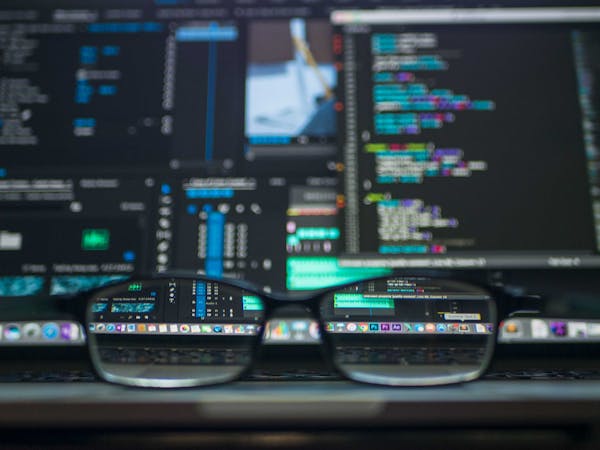OmniAvatar: Revolutionizing Audio-Driven Full-Body Avatar Video Generation
Breakthrough in Digital Human Technology: Researchers from Zhejiang University and Alibaba Group have developed a new system that transforms audio inputs into lifelike avatar videos with perfectly synchronized lip movements and natural full-body animation – a significant leap beyond facial-only solutions.
The Challenge of Audio-Driven Human Animation
Creating realistic human avatars from audio inputs has become increasingly important for virtual assistants, film production, and interactive AI applications. While recent years have seen remarkable progress in facial animation techniques, most existing systems face three critical limitations:
-
Limited animation scope: Traditional methods focus primarily on facial movements -
Unnatural body motions: Generated body movements often appear stiff or disjointed -
Imprecise lip synchronization: Audio-visual alignment degrades in complex scenes
The OmniAvatar research team identified these challenges: “Despite recent progress, methods in full-body animation face several challenges. First, training a full-body model introduces complexities, particularly in maintaining accurate lip-syncing while generating coherent and realistic body movements. Second, current models often struggle with generating natural body movements.”
How OmniAvatar Solves These Challenges
OmniAvatar introduces three groundbreaking innovations that overcome previous limitations:
1. Pixel-Wise Multi-Hierarchical Audio Embedding

Traditional approaches used cross-attention mechanisms that added computational overhead and focused disproportionately on facial features. OmniAvatar’s novel solution:
-
Direct audio integration: Embeds audio features directly into the latent space at pixel level -
Temporal alignment: Matches audio features with compressed video latent frames -
Multi-stage processing: Integrates audio embeddings at different DiT block stages
The technical implementation follows this process:
# Audio processing workflow
z_a = Pack(a) # Audio compression
z_t^i = z_t^i + P_a^i(z_a) # Pixel-level embedding
This approach ensures precise lip synchronization while enabling natural body movements responsive to audio cues.
2. LoRA-Based Model Optimization

Instead of full-model training that degrades video quality or partial fine-tuning that compromises lip-sync accuracy, OmniAvatar implements a balanced approach:
-
Low-Rank Adaptation (LoRA): Efficiently adapts foundation models without full retraining -
Preserved capabilities: Maintains Wan2.1-T2V-14B’s original strengths while adding audio conditioning -
Optimized parameters: Rank=128 and alpha=64 settings balance efficiency and performance
The mathematical representation:
W' = W + ΔW, where ΔW = AB
Where W is the original weight matrix, and ΔW is the low-rank update using trainable matrices A and B.
3. Long Video Generation Strategy

Generating extended videos presents significant consistency challenges. OmniAvatar implements:
-
Identity preservation: Reference frame latent representation repeated throughout -
Temporal consistency: Frame overlapping ensures smooth transitions -
Segmented generation: Breaks long sequences into manageable clips
The core algorithm:
def LongVideoInference(a, l, s, f, z_ref):
# Uses previous batch's last frames as prefix for next batch
z_prefix = z_0[n+s-f : n+s]
z_0[n:n+s] = Model(z_a[n:n+s], z_T[0:s], z_ref)
Performance Validation: Superior Results
Quantitative Comparison (Facial Generation – HDTF Dataset)
| Method | FID↓ | FVD↓ | Sync-C↑ | IQA↑ |
|---|---|---|---|---|
| Sadtalker | 50.0 | 538 | 7.01 | 3.16 |
| HunyuanAvatar | 47.3 | 588 | 7.31 | 3.58 |
| OmniAvatar | 37.3 | 382 | 7.62 | 3.82 |
Semi-Body Animation (AVSpeech Dataset)
| Method | FID↓ | FVD↓ | Sync-C↑ | IQA↑ |
|---|---|---|---|---|
| FantasyTalking | 78.9 | 780 | 3.14 | 3.33 |
| MultiTalk | 74.7 | 787 | 4.76 | 3.67 |
| OmniAvatar | 67.6 | 664 | 7.12 | 3.75 |
Key Metrics Explained:
FID: Measures image quality (lower is better) FVD: Assesses video quality (lower is better) Sync-C: Evaluates lip-sync accuracy (higher is better) IQA: Overall visual quality assessment (higher is better)
The research confirms: “Our model achieves leading performance in Sync-C, showcasing superior lip-sync accuracy, which is a key measure for talking face methods. We also achieve competitive results in other metrics like FID, FVD, and IQA, reflecting our model’s ability to generate high-quality and perceptually accurate images and videos.”
Practical Applications Across Industries
1. Podcasting & Media Production

-
Transform audio recordings into engaging video content -
Generate virtual hosts from single reference images -
Example prompt: "Professional host discussing technology trends@@host_image.png@@podcast_audio.wav"
2. E-Commerce & Advertising

-
Create dynamic product demonstrations -
Enable virtual spokesperson interactions with products -
Sample prompt: "Woman smiling and holding product@@model.png@@description_audio.wav"
3. Entertainment & Virtual Performances

-
Generate singing avatars with perfect lip-sync -
Create animated music videos from audio tracks -
Customizable styles: Realistic, cartoon, oil painting
4. Dynamic Interactive Content

-
Control backgrounds through text prompts -
Adjust character emotions and gestures -
Example: "Character in moving car@@avatar.png@@narration.wav"
Technical Implementation Guide
System Requirements
-
GPU: A100 80GB recommended (minimum 36GB VRAM) -
Software: Python 3.8+, CUDA 12.4 -
Storage: ~50GB for models and dependencies
Installation Process
# Clone repository
git clone https://github.com/OmniAvatar/OmniAvatar
cd OmniAvatar
# Install dependencies
pip install torch==2.4.0 torchvision==0.19.0 torchaudio==2.4.0
pip install -r requirements.txt
# Download models
mkdir pretrained_models
huggingface-cli download Wan-AI/Wan2.1-T2V-14B --local-dir pretrained_models/Wan2.1-T2V-14B
huggingface-cli download facebook/wav2vec2-base-960h --local-dir pretrained_models/wav2vec2-base-960h
huggingface-cli download OmniAvatar/OmniAvatar-14B --local-dir pretrained_models/OmniAvatar-14B
# Directory structure should look like:
# OmniAvatar
# └── pretrained_models
# ├── Wan2.1-T2V-14B
# ├── OmniAvatar-14B
# └── wav2vec2-base-960h
Running Inference
torchrun --standalone --nproc_per_node=1 scripts/inference.py \
--config configs/inference.yaml \
--input_file examples/infer_samples.txt
Optimizing Performance
| Parameter | Recommended Value | Effect |
|---|---|---|
guidance_scale |
4.5-6.0 | Controls prompt influence |
audio_scale |
3.0+ | Adjusts audio synchronization strength |
num_steps |
20-50 | Quality/speed tradeoff (higher=better quality) |
overlap_frame |
13 | Frame overlap for smoother transitions |
Resource Optimization
| GPU Configuration | VRAM Usage | Speed |
|---|---|---|
| 1 GPU (no FSDP) | 36GB | 16.0s/iter |
| 1 GPU (FSDP) | 21GB | 19.4s/iter |
| 4 GPUs (FSDP) | 14.3GB/GPU | 4.8s/iter |
Technical Insights and Best Practices
Prompt Engineering
Structure prompts as:
[First frame description] - [Human behavior] - [Background details]
Example: "Studio backdrop - Host gesturing enthusiastically - Modern podcast set@@host.png@@audio.wav"
Audio Synchronization Enhancement
To improve lip-sync accuracy:
-
Increase audio_scaleparameter (4-6 range recommended) -
Ensure clean audio input without background noise -
Use shorter audio clips (3-20 seconds optimal)
The research shows: “The experiment demonstrates that higher values of classifier-free guidance (CFG) improve the synchronization between lip movements and pose generation, resulting in more accurate alignment with the audio.”
Handling Limitations
Current constraints noted in the research:
-
Color shifts in long videos -
Multi-character interaction challenges -
Extended generation times (25+ denoising steps)
The team acknowledges: “Our model inherits the weaknesses of the base model, Wan [21], such as color shifts and error propagation in long video generation. These issues arise as inaccuracies accumulate over time.”
Frequently Asked Questions
How does OmniAvatar differ from previous approaches?
Unlike facial-only solutions, OmniAvatar generates natural full-body movements while maintaining precise lip synchronization through its pixel-wise audio embedding and LoRA-based training approach.
What’s the maximum video length supported?
While technically unlimited through segmentation, optimal results are achieved with 3-20 second clips. The frame overlapping technique maintains consistency in longer sequences.
Can I customize avatar appearance?
Yes, through the reference image input. The system preserves identity throughout generation using reference frame embedding.
How do I control character emotions?
Specify emotions directly in prompts:
"Excited person celebrating@@image.png@@audio.wav"
"Serious professional explaining@@image.png@@audio.wav"
What hardware is required for local operation?
Minimum: 36GB VRAM GPU (e.g., RTX 3090). Recommended: A100 80GB for optimal performance. Cloud solutions can be used for resource-intensive tasks.
Conclusion and Future Directions
OmniAvatar represents a significant advancement in audio-driven avatar generation. By solving the critical challenges of lip synchronization and natural body movement simultaneously, it opens new possibilities for:
-
Virtual presenters and news anchors -
AI-generated educational content -
Interactive entertainment experiences -
Advertising and marketing content
The research team concludes: “Extensive experiments on test datasets demonstrate that OmniAvatar achieves state-of-the-art results in both facial and semi-body portrait video generation. Furthermore, our model excels in precise text-based control, enabling the generation of high-quality videos across various domains.”
Future work will address current limitations, focusing on real-time generation, multi-character interactions, and enhanced error correction for long-duration videos. As digital humans become increasingly sophisticated, technologies like OmniAvatar bridge the gap between synthetic media and authentic human expression.
Resources and References
-
Project Page: https://omni-avatar.github.io/ -
Research Paper: arXiv:2506.18866 -
Model Access: HuggingFace Repository
@misc{gan2025omniavatar,
title={OmniAvatar: Efficient Audio-Driven Avatar Video Generation with Adaptive Body Animation},
author={Qijun Gan and Ruizi Yang and Jianke Zhu and Shaofei Xue and Steven Hoi},
year={2025},
eprint={2506.18866},
archivePrefix={arXiv},
primaryClass={cs.CV}
}
